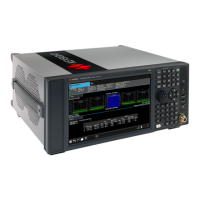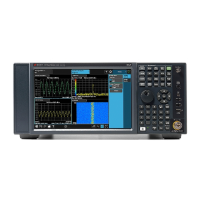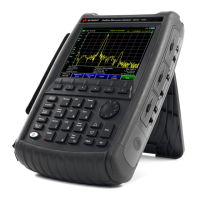163
Key Reference
Trace
Detector
(detector type)
Softkey presents a submenu to select a specific detector
type, or allows the analyzer to select the appropriate
detector for a particular measurement.
Regarding detectors, it is important to understand what is a
trace “bucket”. For every trace point displayed, there is a
finite time during which the data for that point is collected.
The analyzer looks at all of the data collected during that
time and present a single point of trace data based on the
detector mode. The interval during which the data for that
trace point is being collected, is called the “bucket”.
Thus a trace is more than a series of single points. It is
actually a series of trace “buckets”. The data may be sampled
many times within each bucket.
• Average displays the power average in the bucket.
• Sample displays the instantaneous level of the signal at
the center of the bucket represented by each
display point.
• Positive Peak displays the max. of the signal in the bucket.
• Negative Peak displays
the min. of the signal in the bucket.
The detector in use is indicated on the left side of the
display. A “#” will appear next to it if the detector has been
manually selected.
Key access: Shift > Dsip > More
Positive
Peak
Obtains
the maximum video signal between the
last display point and the present display
point
and stores this value in memory. It’s used
primarily when measuring sinusoidal
components. When Positive Peak is selected,
“Peak” appears in the upper- left corner.
Negative
Peak
Is a peak detector, but selects the minimum
video signal value. This detection should not be
used to measure the accurate amplitude. “NPk”
also appears in the upper- left corner, When
Negative Peak is selected.

